What are Keto approved foods? Use this Keto food list to determine what you should (and shouldn’t) be eating on the Keto Diet. Low Carb Foods – Ketosis
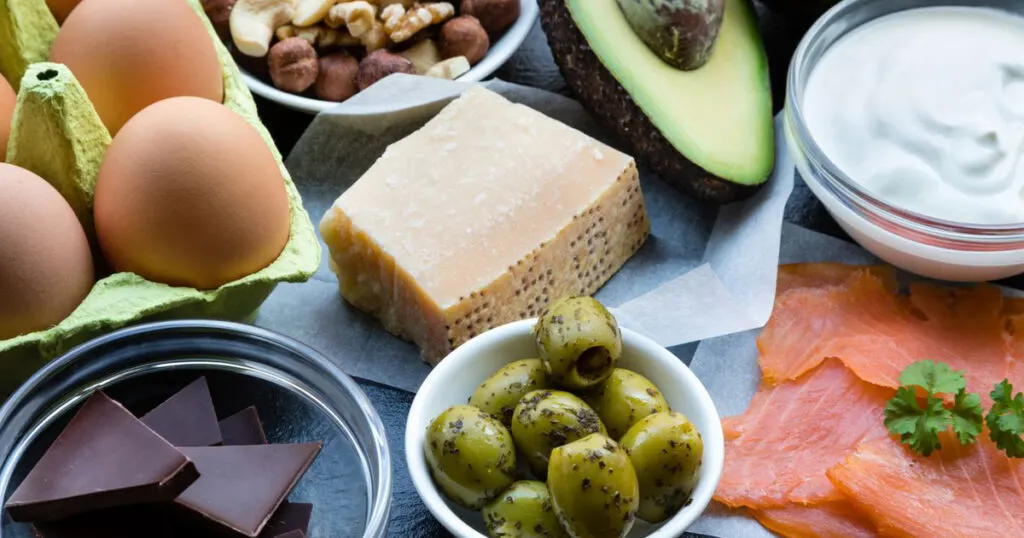
Nutritional Ketosis (or the Keto Diet) is the process of counting your macronutrient intake. Macronutrients include: Fat, Protein, and Carbohydrates.
Tracking Food Macros on the Keto Diet
Tracking your macros is important while trying to remain in Ketosis. Get an app and get ready to pay close attention to exactly what you’re consuming. Once you get a rhythm down, you’ll know exactly what to eat. In fact, you’ll feel it, your body will tell you (and this comes from experience).
Fat: 70-80% (1 Gram = 9 Calories)
Protein: 15-25% (1 Gram = 4 Calories)
Carbs: 5% (1 Gram = 4 Calories)
Good Keto = Real Food
The most important aspect of a high quality Keto Diet is to ensure you’re meeting your macros with real food, this is why we’ve created a definitive Keto food list. We believe strongly you should consume foods approved in a Paleo Diet. This food list includes everything found in a Paleo Diet – showing what would be ideal to consume when maintaining nutritional ketosis. Not Keto Considered Okay / Not Perfect Keto
From the Animal (All Varieties) for Keto
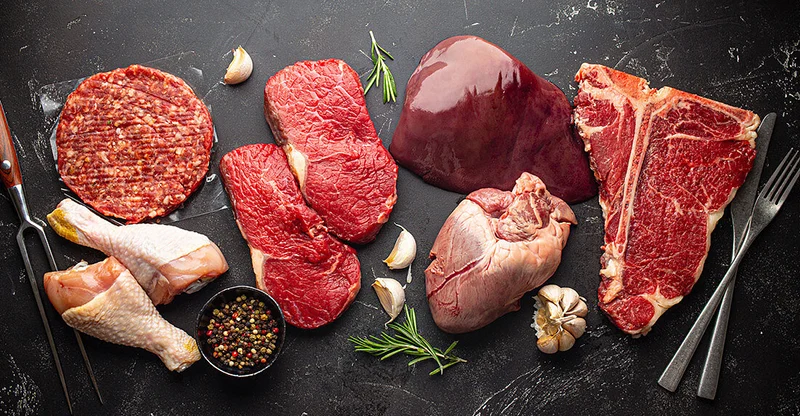
Animal products provide an incredible source of protein loaded with nutrients your body needs. One of the best sources of nutrients while on ANY diet (especially the Keto diet) is ruminant meats like beef. Check out this blog post on all of the nutritional benefits of beef.
- Grass-fed and Finished
- Forage Fed
- Wild Harvested
- Wild Caught
- Trapped
- Eggs
- Grass-fed Gelatin
- Grass-fed Collagen
- Grass-fed Broth
- Grass-fed Ghee
Do you understand how important ruminant meat is when attempting to get the right nutrients in your diet? If so, take a look at this really effective Ketovore Meal Plan:
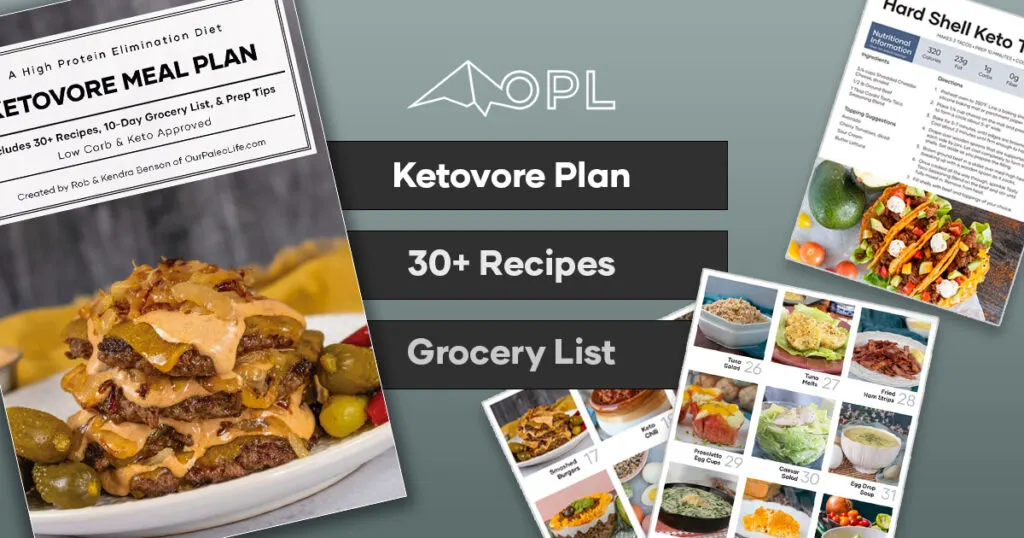
Healthy Fats for a Keto Diet
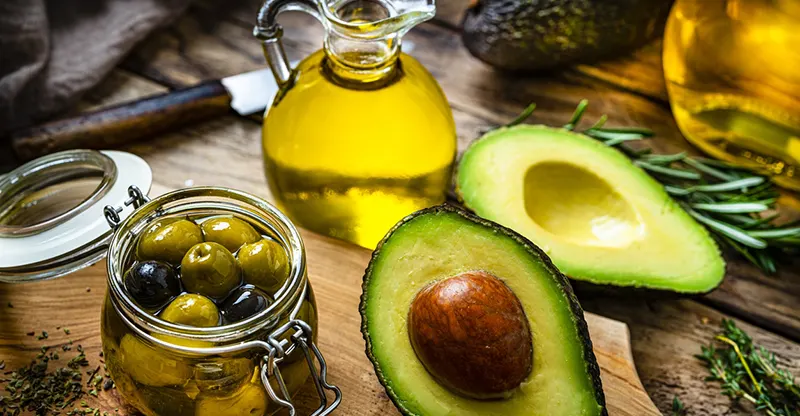
Consuming fat while on a Ketogenic Diet is vitally important. When you stop consuming carbohydrates your body NEEDS an alternative fuel source (that’s KETONES) and Ketones are created via fat (either in your diet or from your body).
If you’re feeling like you don’t have enough energy: start consuming more fat and ensure your electrolytes are balanced (that you’re consuming enough). Here’s a great resource for: Understanding Electrolytes (supplementing electrolytes is very important on a Ketogenic Diet (especially if you’ve never done it before).
Using fat in your recipes is a great way to include fat in your meal without having to concern yourself too much with finding foods that’ll fit and “get your needed fats”.
Remember: do not over-consume fat – use fat as an energy lever. If you’re attempting to lose weight, Ketones WILL BE CREATED by the fat on your body in addition to the fat you consume. Having the right amount of fat in your diet is essential when you’re creating your personalized keto food list.
- Avocado Oil
- Avocados
- Butter
- Clarified Butter (ghee)
- Coconut flesh
- Coconut Milk
- Coconut Oil
- Duck Fat
- Lamb Fat
- Lard
- Macadamia oil
- Mackerel
- Nut Butters
- Olive Oil
- Palm Shortening
- Red Palm Oil
- Salmon
- Sardines
- Tallow
- Veal Fat
- Walnut Oil
Vegetables on the Keto Diet
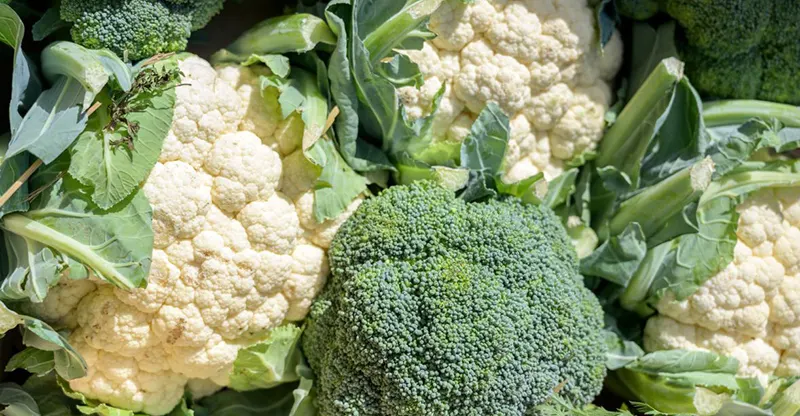
Remember: this list of veggies indicates all Paleo approved vegetables – the colors indicate which are safe on the Keto diet.
Red: Avoid
Yellow: Moderate
Green: Keto Food List Approved
- Acorn Squash – No (Fat .1/ Protein 1.1/ Net Carbs 13) Per Cup
- Artichokes – Yes/No (Fat .2/ Protein 4.2/ Net Carbs 6) Per Artichoke
- Arugula – Yes (Fat .1/ Protein .5/ Net Carbs .4) Per Cup
- Asparagus – Yes (Fat .2/ Protein 3/ Net Carbs 2) Per Cup
- Avocados (even though it’s technically a fruit) Yes (Fat 21/ Protein 3/ Net Carbs 2) Per Cup
- Beet Top – Yes (Fat 0/ Protein 2/ Net Carbs 0) 100 grams
- Beets – No (Fat .2/ Protein 2/ Net Carbs 9) Per Cup
- Bell Peppers – No (Fat .1/ Protein 1.1/ Net Carbs 15) Per Cup
- Bok Choy – Yes (Fat .1/ Protein 1/ Net Carbs .8) Per Cup
- Broccoli – Yes/No (Fat .3/ Protein 2.6/ Net Carbs 3.6) Per Cup
- Brussels Sprouts – Yes/No (Fat .3/ Protein 3/ Net Carbs 4.7) Per Cup
- Buttercup Squash – No (Fat .2/ Protein 1/ Net Carbs 8.3) Per Cup
- Butternut Squash – No (Fat .1/ Protein 1.4/ Net Carbs 13.2) Per Cup
- Cabbage – Yes (Fat .1/ Protein 1/ Net Carbs 2) Per Cup
- Carrots – No (Fat .3/ Protein 1.2/ Net Carbs 8.5) Per Cup
- Cassava (Yuca Root) – No (Fat .6/ Protein 2.8/ Net Carbs 74) Per Cup
- Cauliflower – Yes/No (Fat .3/ Protein 2/ Net Carbs 3) Per Cup
- Celery – Yes (Fat 0/ Protein 0/ Carbs 0) Per Stalk
- Chicory – Yes (Fat 0/ Protein 2/ Net Carbs 1) Per 100g
- Collard Greens – Yes/No (Fat 0/ Protein 2/ Net Carbs 2) Per 100g
- Cucumber Yes/No (Fat .1/ Protein .7/ Net Carbs 3) Per Cup
- Dandelion – Yes (Fat .4/ Protein 1.5/ Net Carbs 3) Per Cup
- Eggplant – No (Fat .2/ Protein 1/ Net Carbs 3) Per 100g
- Endive – Yes (Fat .2/ Protein 1.3/ Net Carbs .3) Per 100g
- Green Onion – Yes (Fat 0/ Protein .3/ Net Carbs .7) Per 100g
- Jerusalem Artichokes – No (Fat 0/ Protein 3/ Net Carbs 23.6) Per 100g
- Kale – Yes/No (Fat .6/ Protein 2.9/ Net Carbs 3.4) Per Cup
- Kohlrabi – Yes (Fat .1/ Protein 1.7/ Net Carbs 2.4) Per 100g
- Leeks – No (Fat .3/ Protein 1.5/ Net Carbs 12.2) Per 100g
- Lettuce – Yes (Fat .2/ Protein 1.4/ Net Carbs 1.6) Per 100g
- Mustard Greens – Yes (Fat .4/ Protein 2.9/ Net Carbs .5) Per 100g
- Okra – Yes/No (Fat .2/ Protein 1.9/ Net Carbs 3.8) Per 100g
- Onions – Yes/No (Fat .1/ Protein 1.1/ Net Carbs 7.3) Per 100g
- Parsnips – No (Fat .3/ Protein 1.2/ Net Carbs 13.1) Per 100g
- Pumpkin – No (Fat .1/ Protein 1/ Net Carbs 6.5) Per Cup
- Radicchio – No (Fat .1/ Protein .6/ Net Carbs 7.6) Per Cup
- Radish – Yes (Fat .1/ Protein .8/ Net Carbs 1.8) Per 100g
- Rapini – Yes (Fat .2/ Protein 1.3/ Net Carbs 0) Per 100g
- Rutabaga – Yes/No (Fat .2/ Protein 1.1/ Net Carbs 6.7) Per 100g
- Seaweeds – No (Fat .6/ Protein 1.7/ Net Carbs 8.7) Per 100g
- Spaghetti Squash – No (Fat .6/ Protein .6/ Net Carbs 5.5) Per Cup
- Spinach – Yes (Fat .4/ Protein 2.9/ Net Carbs 1.4) Per 100g
- Sweet Potatoes – No (Fat .1/ Protein 1.6/ Net Carbs 17) Per 100g
- Swiss Chard – Yes (Fat .2/ Protein 1.8/ Net Carbs 2.1) Per 100g
- Tomatoes – Yes/No (Fat .9/ Protein .9/ Net Carbs 2.7) Per 100g
- Turnip Greens – Yes/No (Fat .3/ Protein 1.5/ Net Carbs 3.8) Per 100g
- Turnips – Yes/No (Fat .1/ Protein .9/ Net Carbs 4.2) Per 100g
- Watercress – Yes (Fat .1/ Protein 2.3/ Net Carbs .8) Per 100g
- Yams – No (Fat .2/ Protein 1.5/ Net Carbs 23.9) Per 100g
- Yellow Crookneck Squash – Yes/No (Fat .2/ Protein .9/ Net Carbs 2.1) Per 100g
- Yellow Summer Squash – Yes/No (Fat .2/ Protein .9/ Net Carbs 2.1) Per 100g
- Zucchini – Yes/No (Fat .3/ Protein 1.2/ Net Carbs 2.1) Per Cup
Nuts & Seeds on Your Keto Food List
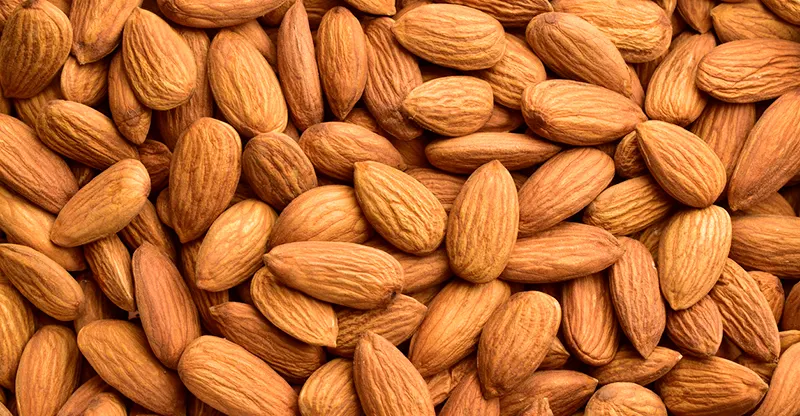
Both nuts and seeds are a great (on the go) snack while on the Keto diet. With nuts and seeds you need to be careful of consuming too much (it can be a lot of calories). It’s common for a lot of people to keep eating and eating without noticing how much was consumed. Don’t do that.
Be cautious of consuming too many Lectins and Phytates.
Why are Phytates bad?
Phytic acid prevents the absorption of iron, zinc, and calcium and may promote mineral deficiencies.
Why are Lectins bad?
Lectins have been shown to prevent the human body from absorbing nutrients. If this happens and happens too often, you may eventually suffer from malnutrition. This may be unlikely but consuming too many Lectins isn’t doing your body any favors.
Yellow: Moderate
Green: Keto Approved
- Almonds – 77% Fat
- Brazil Nuts – 91% Fat
- Cashews – 69% Fat
- Chestnuts – 10% Fat
- Chia seeds – 53% Fat
- Flax Seeds – 70% Fat
- Hazelnuts – 87% Fat
- Macadamia Nuts – 95% Fat
- Pecans – 87% Fat
- Pine Nuts – 91% Fat
- Pistachios – 73% Fat
- Pumpkin Seeds (pepitas) – 38% Fat
- Sesame Seeds – 78% Fat
- Sunflower Seeds – 79% Fat
- Walnuts – 90% Fat
Fruits on the Keto Diet
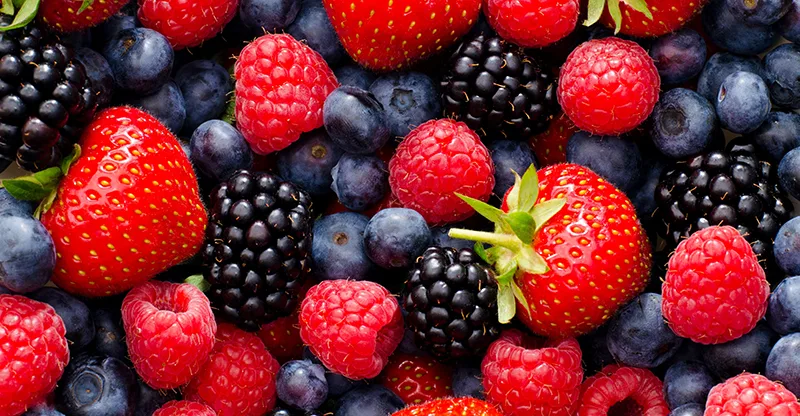
Berries are a popular option on the Keto diet and a great addition to a proper Keto food list. However, berries do contain carbs (be careful over-consuming). The more sweet the fruit tastes the more likely it will raise your blood sugar and impact Ketone production. Be cautious but enjoy what nature has to offer.
- Apples
- Apricot
- Bananas
- Blackberry
- Blueberry
- Cantaloupe
- Cherries
- Coconut
- Cranberry
- Dates
- Figs
- Grapefruit
- Grapes
- Honeydew melon
- Kiwi
- Lemon
- Lime
- Lychee
- Mango
- Nectarines
- Olives
- Oranges
- Papaya
- Passion Fruit
- Peaches
- Pears
- Persimmon
- Pineapple
- Plantains
- Plums
- Pomegranates
- Raspberry
- Strawberry
- Tangerine
- Watermelon
Mushrooms on Keto
Edible mushrooms are safe on the Keto diet.
- Button Mushroom
- Chanterelle
- Crimini
- Morel
- Oyster Mushroom
- Porcini
- Portabello
- Shiitake
Spices and Herbs for Keto
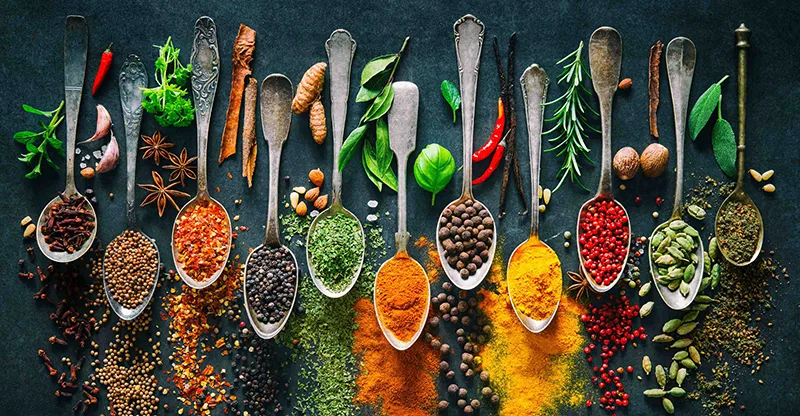
Fat and the right spice blend creates incredible food options. Keto doesn’t have to be difficult or lack taste, just the opposite. Learn how to make incredible food with the right ingredients and you’ll end up loving this way of eating.
- Basil
- Bay Leaves
- Black Pepper
- Cayenne Pepper
- Chilies
- Chives
- Cinnamon
- Cloves
- Coriander
- Cumin
- Dill
- Fennel Seeds
- Garlic
- Ginger
- Horseradish
- Hot Peppers
- Lavender
- Mint
- Mustard Seeds
- Nutmeg
- Onions
- Oregano
- Paprika
- Parsley
- Rosemary
- Sage
- Star Anise
- Tarragon
- Thyme
- Turmeric
- Vanilla
Sweeteners on the Keto Diet
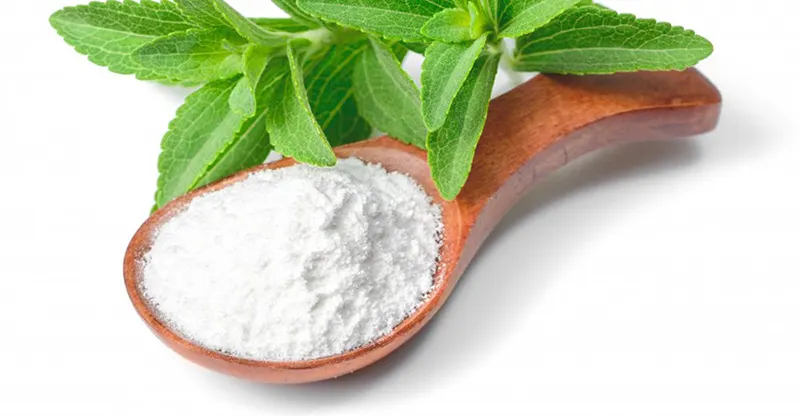
Alternative sweeteners (on a Keto diet) can be amazing but can also cause gut irritation due to how the ingredient is metabolized. However, having the right alternative sweetener can make Keto do-able (as you start to replace sugar with alternatives).
It’s also important to understand, nearly everyone has an opinion on alternative and artificial sweeteners and those people are usually led by what they’ve heard (or feel) and not the science. Click on any of the links in the list below to see more data on the science of a few of these Keto sweetener options.
I’ve purposefully left off Aspartame and Sucralose from this list because these sweeteners cannot be considered “Paleo” by me. However, those two sweeteners are Keto Approved! I’ve written a lot on these and if you consume them, check out this information: Everything you need to know about Sucralose, do artificial sweeteners hurt the gut microbiome, do artificial sweeteners raise insulin. Check out the Alternative Sweeteners category on the site for more information too.
Or start here: What are Keto Sugars?
Red: Avoid
Yellow: Moderate
Green: Keto Approved
- Honey
- Stevia (learn about Stevia)
- Maple Syrup
- Coconut Sugar
- Coconut Sap
- Coconut Nectar
- Date Sugar
- Fruit Juice
- Birch Xylitol
- Monk Fruit
- Erythritol (learn about Erythritol)
- Allulose (learn about Allulose)
Approved Flours on the Keto Diet
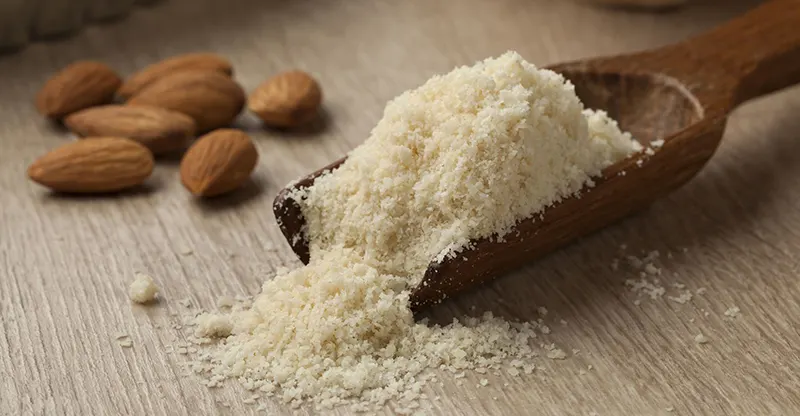
- All Nut Flours
- Sweet Potato Flour
- Coconut Flour
- Tapioca Flour
- Arrowroot Flour
- Cassava Flour
- Tigernut Flour
Fermented Keto Food List
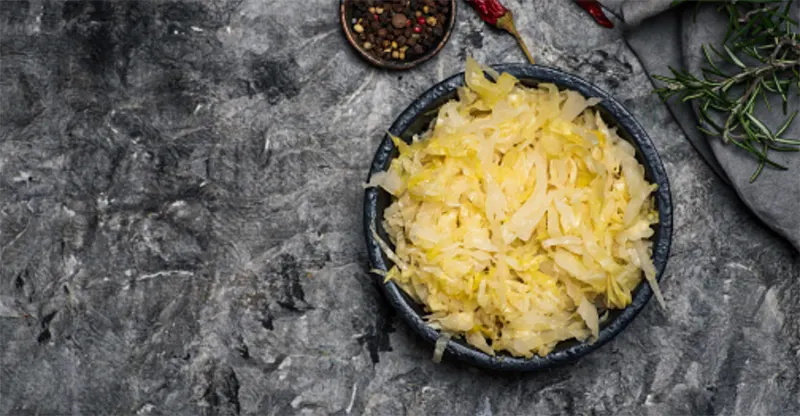
- Apple Cider Vinegar
- Distilled Vinegar
- Sauerkraut
- Kimchi
- Kombucha
- Coconut Kefirs
- Coconut Yogurt
- Nut Based Yogurts
- Drinking Vinegars
Miscellaneous Keto Food List Items (most likely in products)
- Sunflower Lecithin
- Baking Soda
- Egg-Derived Lecithin
- Gum Arabic
- Xanthan Gum (depends on source)
- Mastic Gum Lactic Acid
- Citric Acid (depends on source)
- Ascorbic Acid (depends on source)
- Coffee
- Tea
- Psyllium Husk
Avoid on both Keto & Paleo Diets
These are all foods that should be avoided as a staple in a healthy diet.
No Grains on Paleo (or on Keto Food List)
- Amaranth
- Barley
- Buckwheat
- Bulgur
- Corn
- Hominy
- Kamut
- Oats
- Quinoa
- Rice
- Rye
- Sorghum
- Spelt
- Teff
- Triticale
- Wheat
- Wheat Berries
Legume-Free on Paleo
- Beans
- Lentils
- Peanuts – 78% Fat
- Peas
- Soy and Soy derivatives
- Tempeh
Dairy-Free on Paleo
- Caseinates
- Cheeses
- Cream
- Evaporated Milk
- Milk
- Milk Derivatives
- Yogurts
Miscellaneous Ingredients to Avoid
- Acesulfame Potassium
- Alcohol Sugars with the exception of naturally-derived alcohol sugars
- Artificial and natural esters
- BHA and BHT
- Caramel
- Citric Acid e330
- Coloring Derived from coal
- Corn Syrups
- Cyclamates
- Essences
- FD&C Blue No. 1
- FD&C Blue No. 2
- FD&C Green No. 3
- FD&C Red No. 40
- FD&C Yellow No. 5
- FD&C Yellow No. 6
- Glutamates
- Guanylates
- Hexamine
- Inosinates
- Neotame
- Flavors created in a laboratory by blending either “natural” chemicals or “synthetic” chemicals to create flavorings
- Petroleum
- Potassium Acesulphame
- Potassium Ferrocyanide
- Propionic Acid and Propionates
- Refined Sugars
- Sodium Ethyl Para Hydroxybenzoate
- Tar
- Tartrazine
- TBHQ
- Tetramine
Pin this:
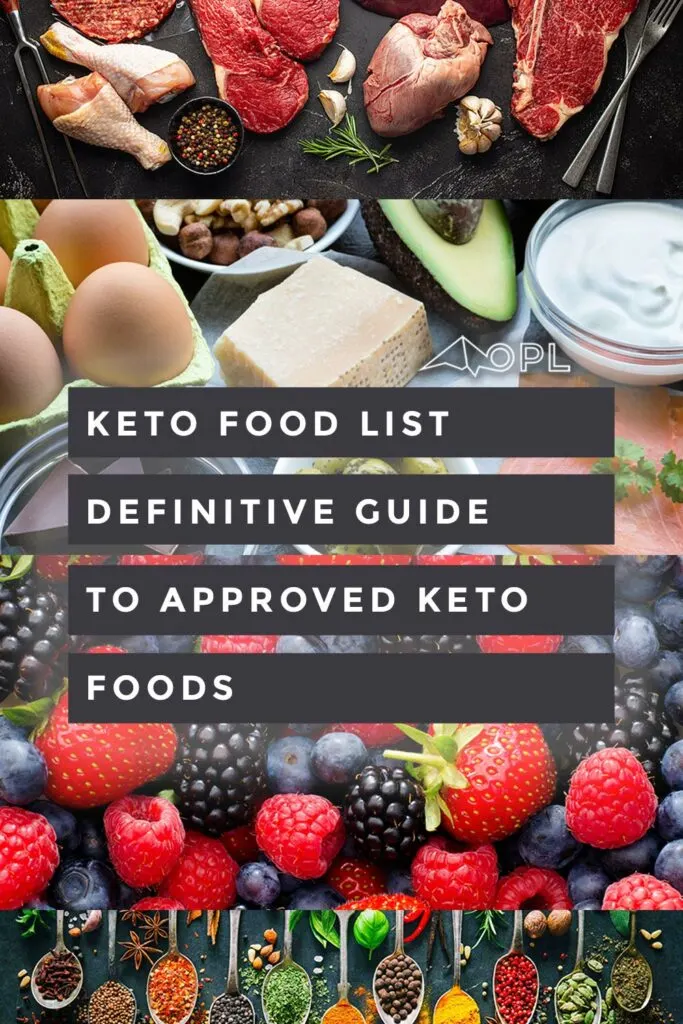

Diana Moye
Sunday 13th of August 2023
Thank you very much for this site. It was extremely helpful for a keto beginning like me.
Erica
Thursday 13th of January 2022
Printable version?
Rob Benson
Friday 14th of January 2022
Good idea! We don't have one right now but will create one! Thank you.
Nora
Sunday 15th of November 2020
Do I have no carbs in the 3-5 days in keto?
Rob Benson
Monday 23rd of November 2020
You'll still have some carbs, just monitor what you take in. A good rule of thumb is 20-30 grams of net carbs MAX. However, getting in to ketosis at first may require much less. Deplete glycogen stores as best you can. Were you able to read the Get in to Ketosis Fast article?
Lauren Novick
Tuesday 25th of August 2020
For the yellow items, how much/how often is fine?
Rob Benson
Thursday 5th of November 2020
It depends on how you're counting your macros. I wish I had a better response but it's VERY dependent on your goal and activity level. :)
elle
Friday 21st of August 2020
can you give more information around xanthan gum? and which sources would make it ok for keto?
Suzanne
Monday 13th of December 2021
@elle, You can easily substitute the gums with a grass fed gelatin. You find it online on a lot of sites. I just got one on Etsy.